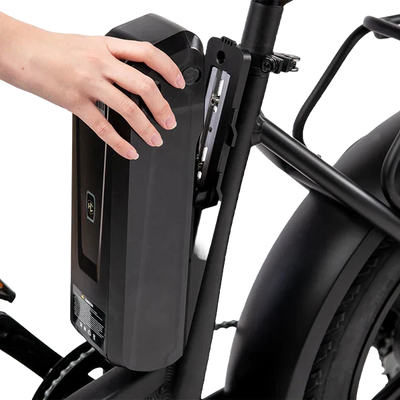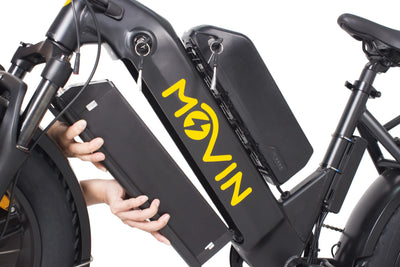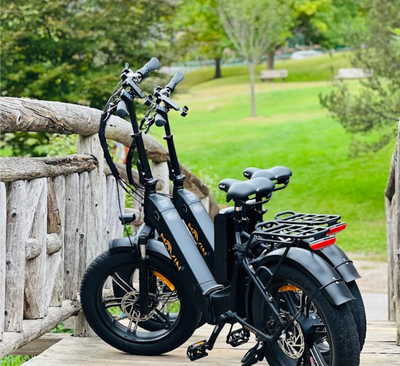Most ebike batteries last 3 to 5 years. In distance, that’s about 10,000 to 25,000 km. But your habits, terrain, and temperature all affect this. Understanding what impacts battery life helps extend it—and avoid early replacement.
Ebike Battery Lifespan Explained
Average Lifespan in Years & Miles
Lithium-ion batteries, common in modern ebikes, usually last 500–1,000 full charge cycles. That equals about 3–5 years of moderate use. In kilometers, a well-maintained battery can deliver up to 25,000 km before its range begins to noticeably decline.
Charge Cycles vs. Real-World Use
Each cycle = 1 full discharge and recharge. Two half-charges = one cycle. Partial charges are easier on batteries than full drains. If you use only 30% per ride, it may take 3–4 rides to complete one full cycle, extending overall lifespan.
Comparative Factors Affecting Battery Lifespan
|
Factor |
Effect on Lifespan |
|
Cold weather |
Reduces performance |
|
Hills & loads |
Increase power demand |
|
Fast charging |
Generates extra heat |
|
Storage habits |
Crucial for longevity |
|
Cell quality |
Impacts cycle count |
Key Factors Affecting Battery Life
Riding Habits & Terrain
Hard pedaling with high assist drains batteries faster. Riding hills or using throttle mode requires more power. Frequent heavy use leads to more cycles, shortening lifespan. Lighter assist, and smoother routes help conserve energy.
Climate Impact
Canadian winters affect batteries. Cold weather temporarily reduces range and slows charging. Never charge below 0 °C. Store batteries indoors during winter to prevent permanent damage. Summer heat also degrades cells—avoid leaving batteries in hot cars or direct sunlight.
Charging Practices
Avoid deep discharges (below 20%) and don’t leave batteries at 100% for days. The 20–80% rule helps extend life. Charge at room temperature with original chargers only. Fast charging is convenient but produces more heat, so use it sparingly.
Extending Your Ebike Battery Life
Optimal Charging Tips
Recharge before the battery hits 0%. Stop charging at 80–90% when you don’t need full range. Use a timer or unplug manually. Charge in a cool, dry place. Periodically do a full 100% charge to balance the cells.
Storage Best Practices
For winter or long breaks, store batteries at 40–60% charge indoors. Never store fully charged or fully drained. Check and top up every 2–3 months. Keep batteries dry and out of freezing or hot environments.
Maintenance Routines
Keep connectors clean and dry. Wipe down after rainy or dusty rides. Make sure batteries lock securely into place. If your battery shows signs of swelling or overheating, stop using it and consult a professional.
When to Replace Your Battery
Signs of Degradation
If your range drops by 30% or more, or your battery shuts off suddenly under load, it’s likely aging. Voltage sag, inconsistent charging, and slower power delivery are other signs. Physical damage (like bulging) is also a serious warning.
Replacement Cost Guide
Replacement batteries typically cost $500–$1,200 CAD. Prices vary by capacity and brand. Movin Ebikes offers UL-certified Samsung lithium-ion batteries with verified specs and extended cycle life:
Always recycle old batteries at certified e-waste depots.
Choosing Long-Lasting Batteries
Top Brands for Durability
Samsung, LG, and Panasonic cells offer high quality. Movin Ebikes uses Samsung batteries across all models, chosen for reliability and tested for over 1,000 cycles. Premium cells maintain over 80% capacity even after years of use.
Warranty & Quality Checks
Look for UL certifications and warranties of 1–2 years. UL2271 and UL2849 are common battery safety standards. Reputable manufacturers publish capacity guarantees (e.g., 70% retention after 500 cycles). Avoid no-name packs with unclear specs.
Ebike Battery Life Calculator
A battery life calculator helps estimate range based on terrain, weight, and speed. Some tools also estimate lifespan based on usage patterns. Movin plans to add a tool like this soon—making battery planning easier for all riders.




